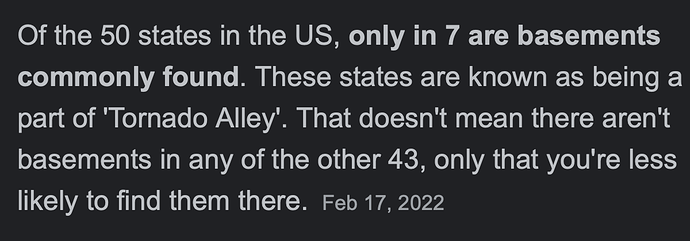When I lived in an apartment in New York, it had a washer and dryer in the kitchen. I actually liked it because it was a small kitchen and the washer and dryer provided additional counter space : )
And heat in cold weather. ![]()
Looks great. I 'd try and get a shot from across the other side of the canal showing the canal and the house.
I literally just took my dishawasher out of the kitchen as I haven’t used it for ten years. I replaced it with a washer/dryer. Having lived in UK I don’t think it at all strange but it attracts comments from Australian visitors. They go “how very European”. Better than leaving your laundry in the basement laundry where all the other tenants go through your smalls, like in US. I will add it to my list of “Things People Are Surprised To Discover Are Done Differently In Other Countries”. Like light switches, electricity outlets, bedroom doors, kettles, quilts/duvets/doonas, and, of course, toilets.
In the winter on my Airbnb listing (UK) which has a woodburner…my main picture is the fire with a couple of pairs of legs propped up in front of it with mugs of hot chocolate on a table ….it works….
Really? Every house we lived in when I was growing up had a basement. That’s where everyone went during the tornado warnings in Kansas. And they weren’t dungeons at all. One summer when I was about 14, my best friend and I entrepreneurially painted up a bunch of second hand furniture, and created a little daycare for the neighborhood kids in my basement. That was our summer job.
If basements are rare in the US, how come there’s so many Airbnb basement apartments?
My underwear is quite small and I always throw it in the washing machine.
From 2015 Washington Post [article gifted: https://wapo.st/3IRb5R9]:
There are about 133 million housing units in the United States, not all of them occupied, according to the Census Bureau. About two-thirds of those are 1-unit buildings – standalone houses. About 42 percent of those standalone houses have basements, either full (32 percent of the total) or partial (9.8 percent).
To @JJD’s point:
Source: Where Are Basements Common? - Love Home Designs
The above article is fun to read.
I grew up in the Chicago area (not part of Tornado Alley) and everyone I knew had a basement there.
If it was an air mattress maybe you were imprinted and your interest in Airbnb started there! ![]()
I was referring to apartment buildings but given I have only lived in Boston and Hoboken maybe basement laundries are rarer than we are lead to expect from US sitcoms. In US bedroom doors usually open so you can see the bed straight away. In UK they open the opposite way, so you can’t see the bed. And don’t get me started on the racetrack theory of supermarkets. Okay since you asked. In countries where people drive of the left (Australia, NZ, Japan, Ireland, South Africa, India, Pakistan) when you go into a supermarket the fruit & vegetables are on the left and shoppers go that way first and continue in a clockwise direction. In ones where you drive on the right (Americas and Europe, pretty much everywhere else) the fruit&veg is on the right and you go in an anticlockwise direction. This isn’t always the case, I recently went into an Aldi for the first time and the fruit & veg was on the right but that is Aldi for you.
Growing up in coastal Virginia, I never even saw a basement till we went to Baltimore and stayed with friends of my parents that had a really nice finished basement.
I rented 2 basement apartments in Seattle, of all places, that often had very wet basements, but not mine. Actually there were quite a few basements in Seattle, there were a few I remodeled as a contractor.
My house here has a basement, but wouldn’t want to live in it, totally unrefined. Depends on where you are in the country as to where you’ll find basements.
Since we are sharing our personal experiences here…
Two of the homes I lived in between 1964 and 1990 had the washer in the kitchen. One of them is my brother in law’s house and the washer is still in the kitchen. The dryer is in a utility room in another part of the house. At least here in El Paso it was quite common to put the washer in the kitchen in the 1950’s. I don’t know how many homes have never moved them out but I’ve been in at least one friend’s granny’s home that still had it in the kitchen.
The only homes with basements in El Paso are at least 80 years old. Homes are built on slab foundations here.
Lots of comments about the location of the washer and dryer. I don’t know your situation, but sometimes the washer placement is the convenient one for an inexpensive plumbing connection. I would rather find one in the bedroom than not have one.
Certainly if you are putting in a water-using appliance that wasn’t planned for when a house was built, there are considerations re hooking into existing plumbing.
However, if you are building from scratch or doing major renos, as my plumber said, you can have things anywhere you want- it just requires more plumbing pipe, which is relatively inexpensive.
Huh? No, it depends on the size and configuration of the room as to whether you can see the bed through the open door or not. In a large bedroom, where there is flexibility as to where to place the bed, one might choose to position the bed so that it couldn’t be seen from the open door. I’ve never heard of house designers or construction contractors basing the direction the door opens with consideration as to bed placement.
And whether the fruit and veggie section of a supermarket is on the right or the left isn’t determined by the store being in the Americas. I could list an equal amount of lefts or rights in all the stores I have shopped at in various places I have lived or travelled in the US and Canada.
The doors usually open into the space not outside or into a hall. It’s for security of the hinges and to prevent a door from being blocked from opening from the outside.
Edit: I was just checking on this because I was told this by a contractor. Apparently in hurricane prone areas doors will open to the outside. So regional differences. And commercial buildings have different codes. My classroom door opened out and when talking to students about active shooters I’d say we could barricade the door. They pointed out that the door opened out, not in. I still argued that piling stuff in front of the door was better than nothing.
A bit of trivia
Doors to bedrooms in the Victorian era opened in a way that did not completely expose the occupants/ bed to person / maid entering the room. The door shielded the room.
This also makes it harder to put furniture in there.![]()
My own Victorian homes demonstrate this.
How does the door (or the contractor who built the house) know where your bed is going to be situated?
You’re right (again).
" Outward opening doors – There are different methods depending on the type of door. If the door only has a knob or handle, secure it with an extension cord, necktie, or belt, and tie it to a nearby heavy object. If the door has a hinge at the top, you can wrap a belt around the hinge so it can’t open. If it’s a set of double doors, tie an extension cord or belt around the handles. If all else fails, you can pile heavy furniture in the doorway to create obstacles if the shooter does try to enter the room."
After Columbine I gave a lot of thought to what I would do in an active shooter situation. Some of my thoughts were seemingly ridiculous but no more so than the intolerable situation that exists necessitating such thoughts.
That’s because those things are usually impulse buys. They want you to go down that aisle first so you’ll purchase things that make your mouth water even though they weren’t on your shopping list. The same way they put the candy at child eye level at the check-out. Can’t tell you how much parents love having to deal with their kids whining and begging for the candy and gum that’s strategically placed, when all mom or dad want to do is check out and go home.

